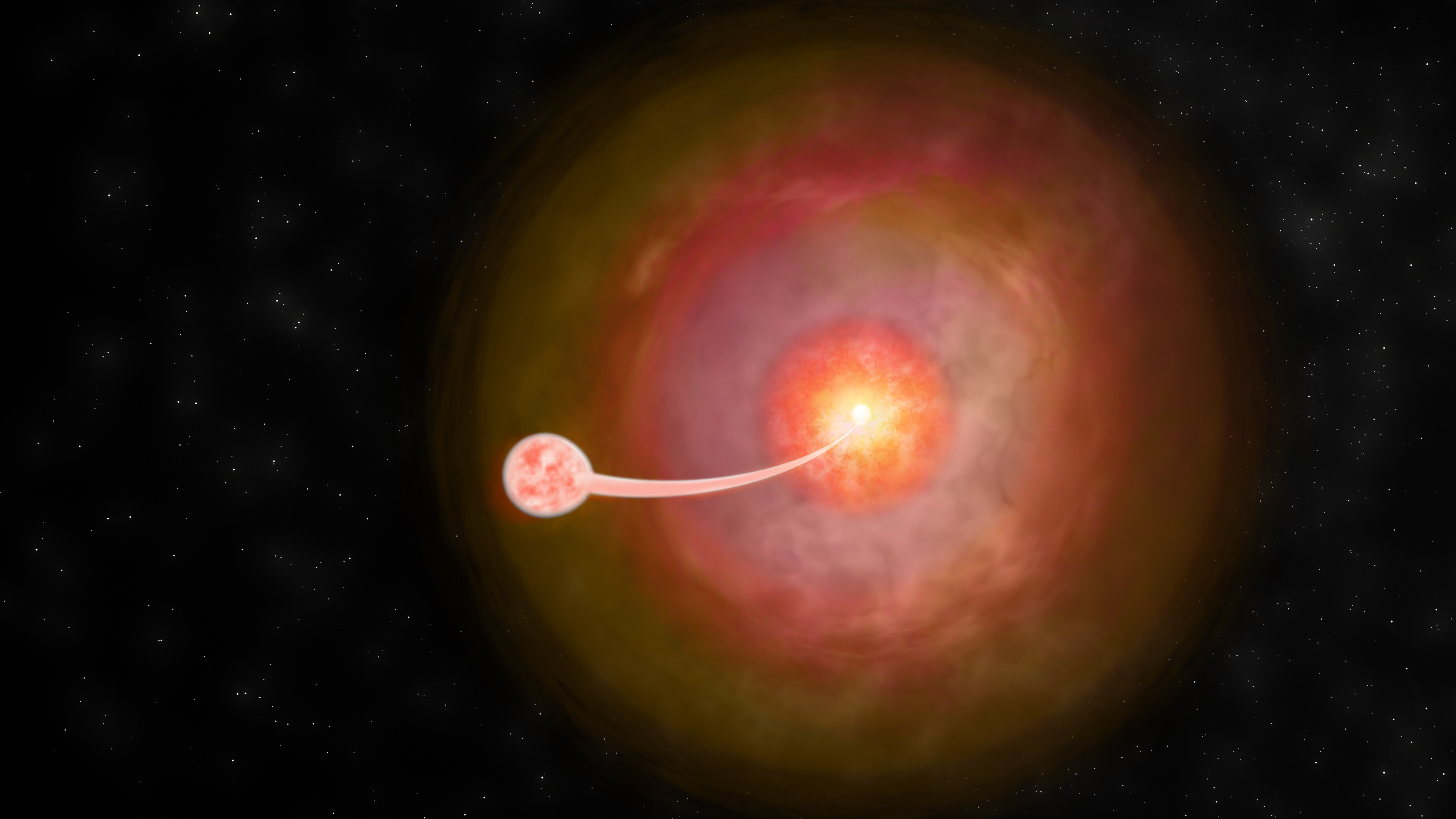AUI will present at the 247th meeting of the American Astronomical Society in Phoenix from January 4-8.
Recent News
ALMA Helps Unmask Monster Black Hole Behind Record-Breaking Cosmic Burst
Astronomers have used the Atacama Large Millimeter/submillimeter Array (ALMA) together with a suite of space- and ground-based telescopes, to study AT 2024wpp, the most luminous fast blue optical transient (LFBOT) ever observed.
Astronomers Make First Radio Detection of Rare Supernova Type, Revealing Secrets of Stellar Death
Astronomers using the U.S. National Science Foundation Very Large Array have captured the first-ever radio signals from a rare class of stellar explosion known as a Type Ibn supernova.
Not Your Average Space Explosion

Credit: B. Saxton (NRAO/AUI/NSF)
Very Long Baseline Array Finds Classical Novae Are Anything But Simple
While studying classical novae using the National Radio Astronomy Observatory’s Very Long Baseline Array (VLBA), a graduate researcher uncovered evidence the objects may have been erroneously typecast as simple. The new observations, which detected non-thermal emission from a classical nova with a dwarf companion, were presented today at a press conference during the 242nd proceedings of the American Astronomical Society in Albuquerque, New Mexico.
V1674 Herculis is a classical nova hosted by a white dwarf and dwarf companion and is currently the fastest classical nova on record. While studying V1674Her with the VLBA, Montana Williams, a graduate student at New Mexico Tech who is leading the investigation into the VLBA properties of this nova, confirmed the unexpected: non-thermal emission coming from it. This data is important because it tells Williams and her collaborators a lot about what’s happening in the system. What the team has found is anything but the simple heat-induced explosions scientists previously expected from classical novae.
“Classical novae have historically been considered simple explosions, emitting mostly thermal energy,” said Williams. “However, based on recent observations with the Fermi Large Area Telescope, this simple model is not entirely correct. Instead, it seems they’re a bit more complicated. Using the VLBA, we were able to get a very detailed picture of one of the main complications, the non-thermal emission.”
Very long baseline interferometry (VLBI) detections of classical novae with dwarf companions like V1674Her are rare. They’re so rare, in fact, that this same type of detection, with resolved radio synchrotron components, has been reported just one other time to date. That’s partly because of the assumed nature of classical novae.
“VLBI detections of novae are only recently becoming possible because of improvements to VLBI techniques, most notably the sensitivity of the instruments and the increasing bandwidth or the amount of frequencies we can record at a given time,” said Williams. “Additionally, because of the previous theory of classical novae they weren’t thought to be ideal targets for VLBI studies. We now know this isn’t true because of multi-wavelength observations which indicate a more complex scenario.”
That rarity makes the team’s new observations an important step in understanding the hidden lives of classical novae and what ultimately leads to their explosive behavior.
“By studying images from the VLBA and comparing them to other observations from the Very Large Array (VLA), Fermi-LAT, NuSTAR, and NASA-Swift, we can determine what might be the cause of the emission and also make adjustments to the previous simple model,” said Williams. “Right now, we’re trying to determine if the non-thermal energy is coming from clumps of gas running into other clumped gas which produces shocks, or something else.”
Because Fermi-LAT and NuSTAR observations had already indicated that there might be non-thermal emission coming from V1674Her, that made the classical nova an ideal candidate for study because Williams and her collaborators are on a mission to either confirm or deny those types of findings. It was also more interesting, or cute, as Williams puts it, because of its hyper-fast evolution, and because, unlike supernovae, the host system isn’t destroyed during that evolution, but rather, remains almost completely intact and unchanged after the explosion. “Many astronomical sources don’t change much over the course of a year or even 100 years. But this nova got 10,000 times brighter in a single day, then faded back to its normal state in just about 100 days,” she said. “Because the host systems of classical novae remain intact they can be recurrent, which means we might see this one erupt, or cutely explode, again and again, giving us more opportunities to understand why and how it does.”
The National Radio Astronomy Observatory (NRAO) is a major facility of the National Science Foundation (NSF) operated under cooperative agreement by Associated Universities, Inc.
Media Contact:
Amy C. Oliver, FRAS
Public Information & News Manager, NRAO
+1-434-242-9584
[email protected]
This news article was originally published on the NRAO website on June 26, 2023.
Recent News
AUI to Attend AAS 247 Conference
AUI will present at the 247th meeting of the American Astronomical Society in Phoenix from January 4-8.
ALMA Helps Unmask Monster Black Hole Behind Record-Breaking Cosmic Burst
Astronomers have used the Atacama Large Millimeter/submillimeter Array (ALMA) together with a suite of space- and ground-based telescopes, to study AT 2024wpp, the most luminous fast blue optical transient (LFBOT) ever observed.
Astronomers Make First Radio Detection of Rare Supernova Type, Revealing Secrets of Stellar Death
Astronomers using the U.S. National Science Foundation Very Large Array have captured the first-ever radio signals from a rare class of stellar explosion known as a Type Ibn supernova.
